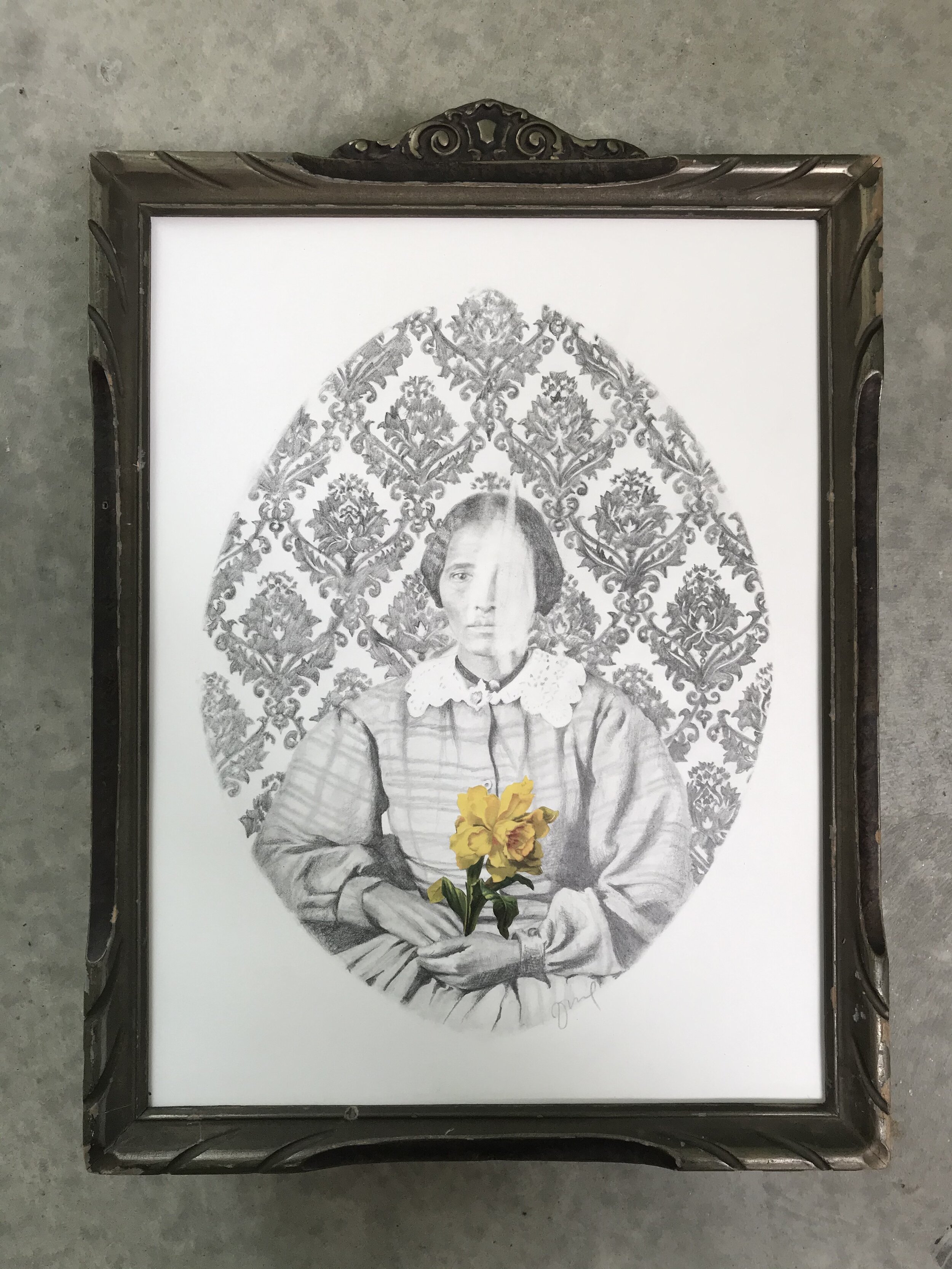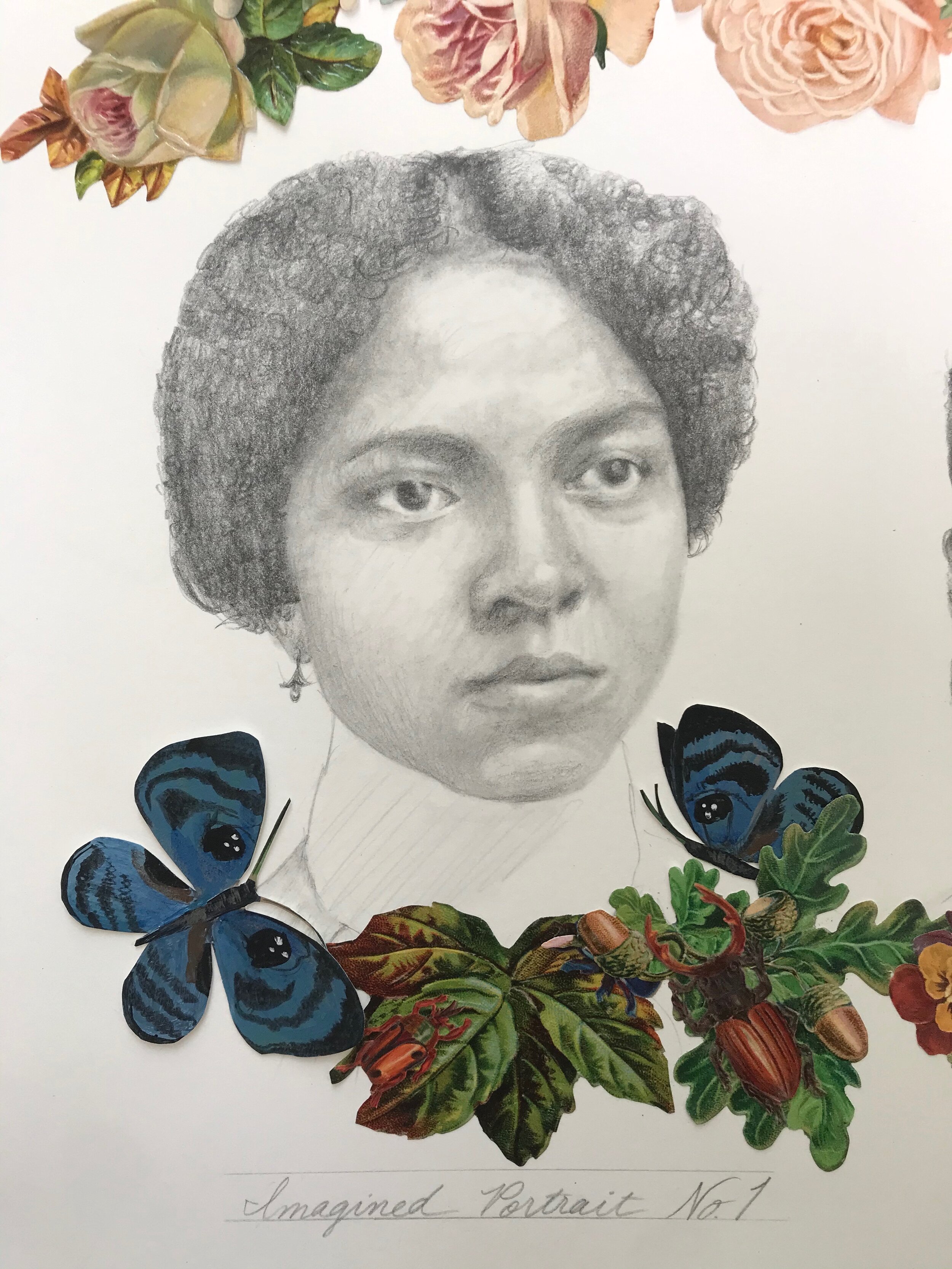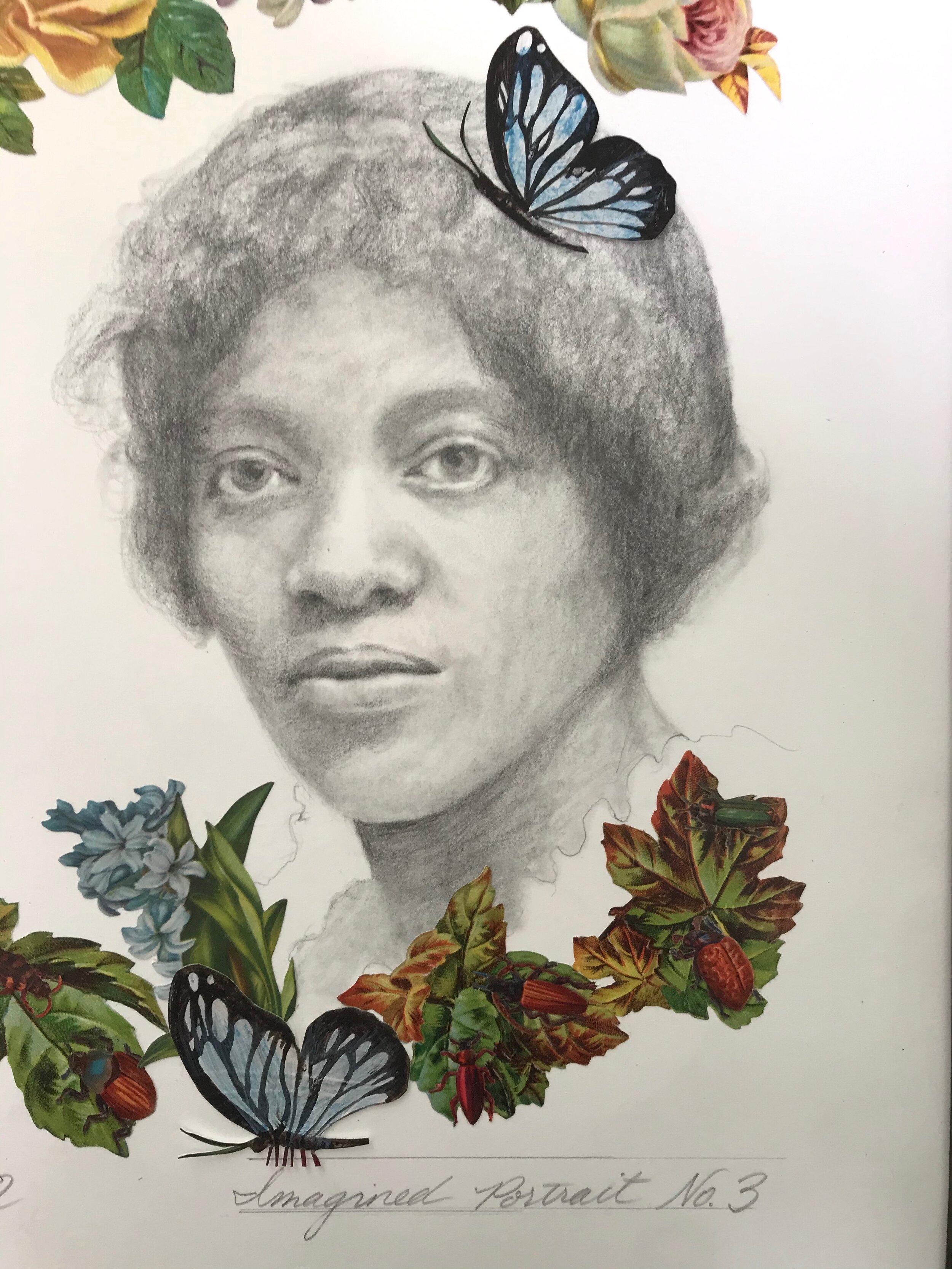Photo Credit: Jim Carmody
America Newton, 1835-1917
An emancipated slave, America Newton helped settle a little mining town called Julian. A fixture in the community, America was a property owner and ran her own laundry business. Click image to watch Beverly Johnson’s solo, America’s View, inspired by America Newton. Videography/editing: Damien Kaiser. Music: The Parlour Trick.
“America imagined/erased”:
“Making a portrait of America Newton, for me, meant confronting and delving into the disgraceful history of barbaric systematized American slavery. I have learned that enslavement, the denial of freedom, was perhaps a more fundamental shaper of our nation than the more commonly claimed value of freedom. This drawing is an attempt to address the painful reality that our African American women pioneers, specifically our region’s Great-Great-Grandmothers like America, were in many ways unknown, unseen, unheard. Note: The daffodil is a symbol of rebirth and new beginnings, which aligns with Ms. Newton's narrative of brazenly relocating in California.” -Artist Wren Polansky
“America Newton: Imagined Portraits 1 through 3”:
In the words of Wren Polansky:
As a priviledged white woman, I initially felt challenged by the assignment to render a formerly enslaved, black pioneer woman of whom no portraits exist. I wanted to both honor her and acknowledge the unforgiving cultural period in which she lived. Working consciously, I was keenly aware that this was a complex task. As Dr. Bayo Akomolafe says, “in centralizing the body and the experiences of ‘black women’ for instance, it ironically creates a savior narrative for whiteness… it incarcerates black bodies into narratives of eternal victimhood.”
Visually representing a body is creating a text to be read. These portraits encapsulate some pieces of the history and the person, but inevitably fall short. As Akomolafe suggests, “we may not know what a wiser structure looks like but we can still gesture toward it.” These are my first crude attempts.
I intentionally chose to draw the faces of real Victorian African American women who are beautiful, young, and strong. They posess a bold, forward gaze. In all of my formal years of education, no one ever showed me images of women like that. It wasn’t until college when I took a course called, “Black Women, Femenism(s) and Social Change” that I critically studied how black women are typically represented. Since there were no photographs of Ms. Newton to work from, I chose to represent her in a way that is atypical, countering an inaccurate and destructive narrative.
I often listen to music associated with the subject I am representing. In this case, however, I wanted to educate myself so I listened to hours and hours of rigorous academic lectures about slavery and emancipation. I often found myself putting my pencils down to weep. Words fall short of the connection that can be felt when bearing witness to the abuse and struggle of a kindred being. Self or personhood are more fluid than we often recognize, as is identity itself.
America Newton is an unsung hero. May we celebrate her bravery, resourcefulness, and determination. Against tremendous odds, she did it.” -Wren Polansky
To return to The Suffrage Project: Online click here
To go to the next story click here








